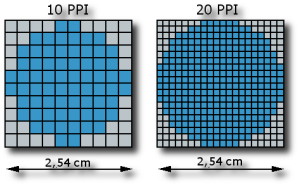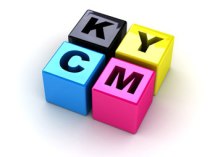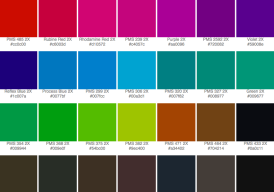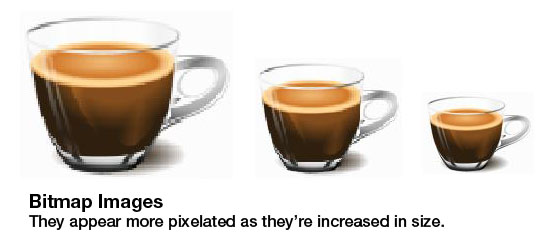Progressively designers these days are working in a selection of
mediums — both digital and print. But it can take a dissimilar set of
condition to put together a successful project for all. Print design has
its individual jargon.
But there is a boundary to the number of dots per inch that the eye can in fact see. Usually, 300 and 600 DPI is the standards for most print jobs, depending on the kind of paper and printer used. Lighter load papers print with lower DPI because of bleed and latent ink over-saturation of paper. Laser-style printers on first-class paper often run at a top DPI.
It is significant to note that increasing DPI will raise a file size. It is optional to save each file at the suitable print DPI to conserve filing efficiency.
While mainly design software tools contain measurements in DPI, they only pass on to print design. DPI means not anything when it comes to digital projects since screen motion is not measured in the similar way; digital resolution is calculated in pixels.
So every color will look something akin to this: C=100 M=53 Y=0 K=47.
Using CMYK color helps you find consistent results crossways print jobs. If your logo uses the blue over, you will want to use the similar CMYK values for each job, rather than eyeballing a blue color to preserve brand constancy.
To make sure the best and most precise print job, change documents and colors to CMYK before submitting them for printing.
What’s unlike about large format printing is that is it planned to be viewed from a detachment and quite often huge format projects will look rather pixilated.
It does obtain a high-quality image to make these types of projects. Image a typical size 8.5 by 11-inch flier on a much better scale. The image has to be better but some printers need a lesser DPI, some as small as 150 DPI, depending on size and employ of the item.
Pantone colors are recognized by number and the company produces color kits to help you preserve consistent print excellence across mediums. Industrial Materials take paper into account for color mixing and use a put of letters to help note paper sort for each color mix. The color integer is followed by C, U or M, which communicates to paper types covered, uncoated or matte.
1. DPI
Dots per inch are determined of printing quality. A lot of printers work by producing little dots per square inch to generate an image, more dots equivalent greater accuracy and fact.But there is a boundary to the number of dots per inch that the eye can in fact see. Usually, 300 and 600 DPI is the standards for most print jobs, depending on the kind of paper and printer used. Lighter load papers print with lower DPI because of bleed and latent ink over-saturation of paper. Laser-style printers on first-class paper often run at a top DPI.
It is significant to note that increasing DPI will raise a file size. It is optional to save each file at the suitable print DPI to conserve filing efficiency.
While mainly design software tools contain measurements in DPI, they only pass on to print design. DPI means not anything when it comes to digital projects since screen motion is not measured in the similar way; digital resolution is calculated in pixels.
2. CMYK
Each color is created by mixing dissimilar values of these four hues. Print processes are based on CMYK printing and require corresponding CMYK color standards to reproduce exact color.So every color will look something akin to this: C=100 M=53 Y=0 K=47.
Using CMYK color helps you find consistent results crossways print jobs. If your logo uses the blue over, you will want to use the similar CMYK values for each job, rather than eyeballing a blue color to preserve brand constancy.
To make sure the best and most precise print job, change documents and colors to CMYK before submitting them for printing.
3. Large Format
Huge format refers to everything that has to be printed using a forte printer, usually larger than 16 by 20 inches. Huge format printing is used for banners, billboards and posters.What’s unlike about large format printing is that is it planned to be viewed from a detachment and quite often huge format projects will look rather pixilated.
It does obtain a high-quality image to make these types of projects. Image a typical size 8.5 by 11-inch flier on a much better scale. The image has to be better but some printers need a lesser DPI, some as small as 150 DPI, depending on size and employ of the item.
4. Pantone Color
Pantone is recognized as the worldwide usual of color. The Pantone Matching System is based on situate for standard colors that can be varied in precise combinations that print time after time across dissimilar printing presses and substrates.Pantone colors are recognized by number and the company produces color kits to help you preserve consistent print excellence across mediums. Industrial Materials take paper into account for color mixing and use a put of letters to help note paper sort for each color mix. The color integer is followed by C, U or M, which communicates to paper types covered, uncoated or matte.





No comments:
Post a Comment